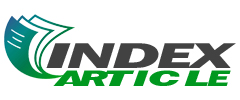Are you looking for an effective way to package your products while also displaying them in an eye-catching manner? Plastic blister packaging may be the solution for you. In this article, we will cover everything you need to know about this popular packaging option. From its benefits and drawbacks to its various types and applications.
What is Plastic Blister Packaging?
Plastic blister packaging is a type of packaging that uses a clear plastic blister to hold a product in place, with a paperboard backing card to display the product’s information. The plastic blister is typically made from PVC or PET. While the backing card can be made from various materials, such as paperboard or corrugated cardboard.
Benefits of Plastic Blister Packaging
There are several benefits to using plastic blister packaging:
- Product Visibility: Plastic blister packaging allows consumers to see the product without having to open the package, which can help entice them to purchase it.
- Protection: The clear plastic blister provides a protective barrier around the product, preventing it from being damaged during shipping and handling.
- Security: Plastic blister packaging can be designed with tamper-evident features, such as heat seals or special closures, to ensure that the product has not been opened or tampered with.
- Branding: The backing card can be customized with a company’s logo and branding, helping to increase brand recognition and awareness.
Drawbacks of Plastic Blister Packaging
While plastic blister packaging offers many benefits, there are also some drawbacks to consider:
- Environmental Concerns: Plastic blister packaging is not biodegradable and can take hundreds of years to decompose in landfills. Concerns regarding its effects on the surroundings have arisen as a result.
- Difficulty to Open: Some consumers may find plastic blister packaging difficult to open, which can be frustrating and lead to negative perceptions of the product.
- Cost: Plastic blister packaging can be more expensive than other packaging options, such as cardboard boxes or plastic bags.
Types of Plastic Blister Packaging
There are several types of plastic blister packaging to choose from, including:
Face Seal Blister
A face seal blister consists of a clear plastic blister that is heat-sealed to a backing card, creating a tight seal around the product.
Trap Blister
A trap blister features a cavity that is “trapped” between two layers of plastic, creating a secure package that is resistant to tampering.
Slide Blister
A slide blister allows the consumer to slide the product out of the package, making it easy to access and reducing the risk of damage to the product.
Mock Clamshell
A mock clamshell consists of two halves of a blister that are heat-sealed together, creating a package that resembles a clamshell.
Applications of Plastic Blister Packaging
Plastic blister packaging is used in a variety of industries, including:
Retail
Plastic blister packaging is commonly used in retail environments to package and display products. Such as electronics, toys, and small household items.
Medical
Plastic blister packaging is used in the medical industry to package and protect medical devices and equipment, such as syringes and surgical instruments.
Food
Plastic blister packaging is used in the food industry to package and display items. Such as candy, gum, and other small snacks.
Conclusion
Plastic blister packaging is a popular packaging option that offers many benefits, such as product visibility, protection, and security. However, it also has some drawbacks, such as environmental concerns and difficulty to open. There are several types of plastic blister packaging to choose from, and it is used in a variety of industries, including retail, medical, and food. If you’re looking for an effective way to package and display your products, then Plastic blister packaging is the best.







